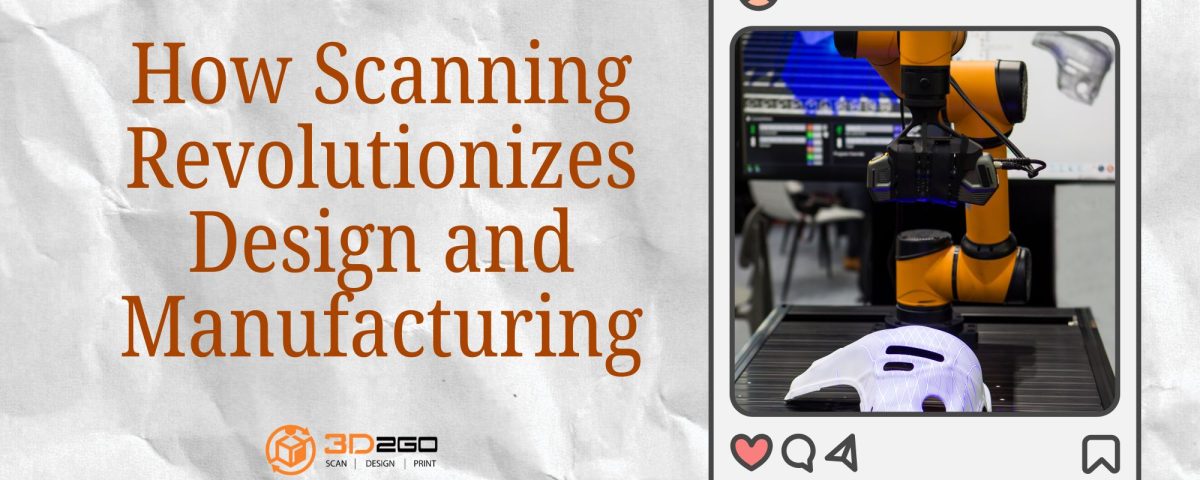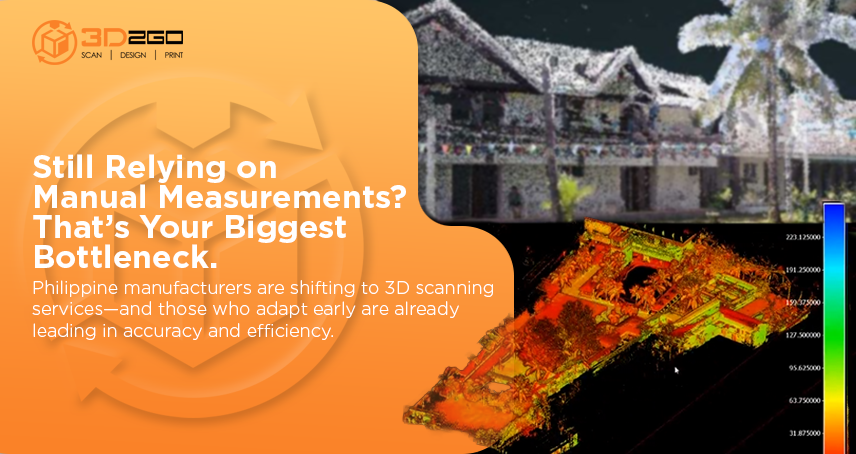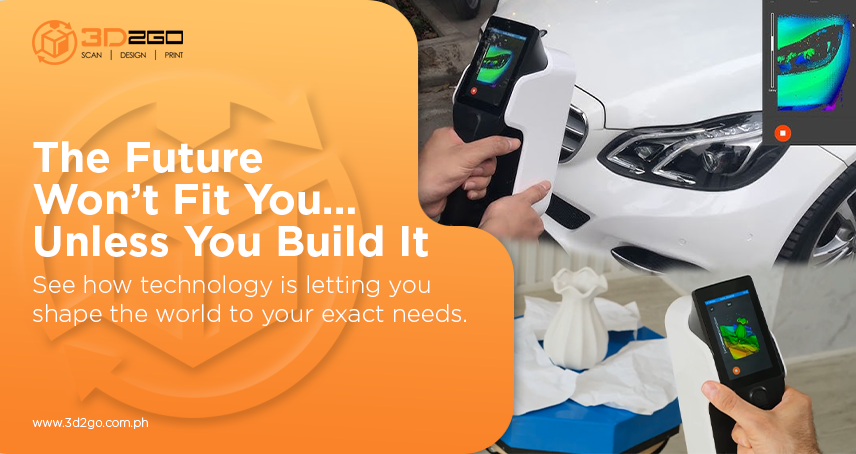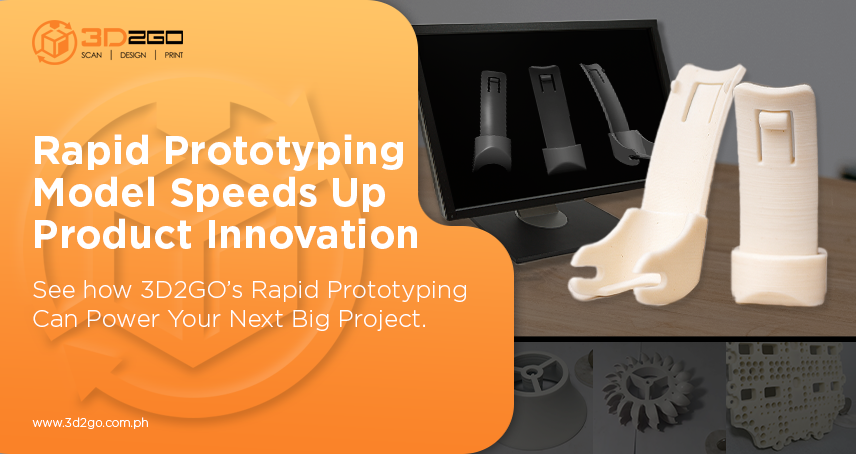
How LiDAR Surveys Deliver Accuracy and Efficiency Across the Philippines
October 10, 2024
The Role of 3D Modeling in Medical Prosthetics
February 18, 2025The advancement of scanning technology, especially 3D scanning, is revolutionizing the fields of design and manufacturing in the Philippines and around the globe. By capturing precise data from physical objects and translating it into digital models, scanning has opened up new possibilities across a wide range of industries, from architecture to automotive manufacturing. In the Philippines, scanning has been instrumental in streamlining workflows, reducing production errors, and empowering companies to bring ideas to life with unmatched precision and efficiency. This transformation is especially significant for Filipino companies striving to meet both local and global standards while catering to the unique requirements of their clients.
At its core, scanning technology allows companies to digitally capture the exact dimensions, shapes, and textures of objects, converting them into detailed 3D models that can be used for various applications, from prototyping to quality assurance. In the Philippines, businesses are increasingly leveraging scanning to bridge the gap between traditional manufacturing methods and digital innovation. This technology not only cuts costs but also enables companies to reduce waste and increase productivity, creating a competitive advantage in industries like construction, product design, and cultural preservation.
Precision Redefined: Scanning in the Philippine Manufacturing Sector
In manufacturing, accuracy is paramount. Filipino companies that adopt scanning technology are finding new ways to optimize their operations and eliminate costly production errors. For instance, local automotive parts manufacturers can now scan an entire vehicle component and analyze its geometry with incredible accuracy. This approach helps to identify any deviations from the original design before the component is produced, saving both time and materials. By ensuring that parts align and function correctly, manufacturers reduce the need for rework and scrap, ultimately minimizing production costs.
A great example of this can be found with a 3D company in Metro Manila that supplies automotive parts. Using high-resolution scanning, the company has been able to replicate and improve components for a client without needing to rely on outdated blueprints or time-intensive manual measurements. Scanning has empowered the team to meet exacting industry standards and deliver parts that fit seamlessly within existing systems, reducing lead times and helping to boost customer satisfaction.
Scanning in Cultural Preservation and Restoration
The Philippines is home to numerous historical structures, monuments, and artifacts that represent the nation’s rich cultural heritage. However, many of these sites face degradation due to natural wear and tear, weather conditions, and even human activity. Scanning technology has proven invaluable in preserving these cultural assets by creating accurate digital replicas of endangered sites and objects. The Philippine National Museum, for example, has initiated several projects using 3D scanning to document and preserve important artifacts. By capturing every detail, these digital archives allow for future restoration and public viewing, even if the original pieces are damaged over time.
One notable project involved the digital preservation of intricate wood carvings from the Banaue Rice Terraces, a UNESCO World Heritage site. By scanning these carvings, conservators were able to create a digital archive that captures every detail of the design. This archive can be used not only to educate future generations but also to replicate these artifacts should they ever be lost to natural disasters. The project highlights how scanning technology can serve as a bridge between tradition and modernity, enabling Filipino cultural institutions to honor and safeguard the country’s heritage.
Enhancing Architecture and Construction
In the construction and architecture industries, scanning technology has introduced a new level of accuracy and efficiency. Filipino architects and engineers are using scanning to streamline the design and build process, creating detailed 3D models of project sites and structures. These models help architects visualize and plan layouts with incredible accuracy, leading to better decision-making and reducing the likelihood of costly changes during the construction phase.
An architectural firm in Makati recently used 3D scanning for a high-rise residential project. The team was able to scan an entire floor layout, converting the data into a digital 3D model. This model allowed them to detect potential issues with the design and make adjustments before breaking ground. Additionally, by sharing the digital model with contractors and clients, the firm fostered better communication and transparency, ensuring that everyone involved in the project understood the design objectives and timeline. The application of scanning technology in this way has helped the firm maintain its reputation for excellence and deliver projects on schedule.
Supporting Reverse Engineering and Product Design
In the Philippines, local manufacturers are increasingly using scanning for reverse engineering, allowing them to replicate and improve upon existing products. Reverse engineering involves scanning an existing object, capturing its geometry, and then modifying it to create an enhanced version or an entirely new design. For example, a 3D printing company based in Cebu worked with a marine engineering client to reverse-engineer a key component of a watercraft. The scanning process allowed the team to capture the precise specifications of the part, develop a digital model, and make design improvements to increase durability and performance.
This approach to reverse engineering not only speeds up the design process but also gives Filipino companies a way to innovate within existing frameworks. By relying on scanning, businesses can analyze competitors’ products, make improvements, and create optimized versions tailored to local requirements. For example, local companies in the appliance sector are using this method to design more efficient versions of existing products, making them more competitive in the Philippine market.
Scanning for Medical and Dental Advancements
In healthcare, precision and customization are essential. Scanning technology has become an invaluable tool for Filipino dental and orthopedic professionals who require accurate models for customized solutions. 3D scanning enables practitioners to create perfectly fitting implants, braces, and prosthetics, improving patient outcomes and comfort.
A dental clinic in Quezon City, for example, uses scanning technology to create custom dental implants for patients. By scanning a patient’s teeth and gums, the clinic can produce implants that are tailored to the unique contours of the mouth, significantly reducing discomfort and improving the success rate of procedures. This personalized approach not only enhances patient satisfaction but also establishes the clinic as a leader in advanced dental care.
The Future of Scanning in the Philippines
The adoption of scanning technology in the Philippines is growing rapidly, and as costs decrease, more industries are likely to adopt this transformative tool. From aerospace to fashion, the potential applications of scanning are vast and varied. This technology is helping Filipino companies operate on a global level, allowing them to compete in terms of quality, efficiency, and innovation.
As a Social Media Specialist at a 3D company specializing in 3D printing, 3D scanning, and 3D modeling, I see firsthand how scanning continues to redefine what is possible. By educating clients about the benefits of this technology, we are helping to drive adoption across various sectors. Whether it’s in preserving cultural heritage, improving product design, or enhancing healthcare outcomes, scanning is paving the way for a future where accuracy, efficiency, and creativity are at the forefront of design and manufacturing in the Philippines.
With scanning as a foundational technology, Filipino companies are positioned to innovate, preserve, and expand their offerings, building a future where precision is paramount and new possibilities are within reach.






